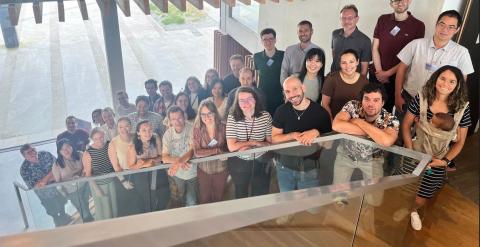
Tropicana
We are coming to the end of the very rich Tropicana program which initially began on June 3 for 4 weeks.
The first 2 weeks were specifically devoted to Mediterranean cyclones, their creations, evolutions and various analyzes carried out by climatologists. Workshops, debates, conferences and educational sessions took place.The last 2 weeks have been specially devoted to tropical cyclones.
The TROPICANA program, was an interdisciplinary initiative aimed at addressing the challenges of tropical cyclones, medicanes, and their link to climate change. These cyclones pose significant threats to life and property. TROPICANA adopted a comprehensive approach, integrating physics, modeling, statistical methodologies, and climate attribution studies to enhance understanding. The program spanned four weeks, featuring workshops, discussions, and public engagement initiatives designed to foster collaboration, knowledge sharing, and project development.
The most important outcome of TROPICANA was its role in deepening and broadening knowledge within various scientific communities. By facilitating the exchange of results and experiences among experts from different fields, the program enriched perspectives on tropical cyclones and medicanes. This interdisciplinary dialogue not only enhanced understanding but also promoted collaboration across scientific disciplines. In addition, TROPICANA delivered a press conference for international journalists with outputs in French and American journals One result was the publication of a rapid attribution report for Medicane Ianos by ClimaMeter. The report concluded that Mediterranean depressions like Ianos exhibit similar atmospheric pressure and up to 15% higher precipitation in the present compared to the past, suggesting a significant role of natural climate variability. Another output expected in a few weeks, is a BAMS meeting summary, which will communicate to the broad meteorological community the outcomes of TROPICANA. Within 2024, we also expect to complete white papers, tutorials, and recommendations on defining medicanes and tropical cyclones. This will pave the way for TROPICANA 2, a program that we would submit for the IPa proposal, to be held in 2027.
In the near future, we will use the TROPICANA network to establish a community of researchers committed to advancing our understanding of medicanes and Tropical cyclones. The TROPICANA network will continue to drive initiatives through meetings at the American Geoscience Union and European Geoscience Union, as well as an active Slack channel, fostering ongoing collaboration and knowledge exchange among experts. These platforms will serve as forums for discussing emerging research, methodologies, and findings in tropical cyclone and medicane studies.
Our long term goal is to gather for TROPICANA 2, with a high level of development and refinement of modeling techniques for both tropical cyclones and medicanes, with a special emphasis on improving projections of TC frequency changes and enhancing attribution methodologies. Innovative approaches such as machine learning will be leveraged for bias reduction and downscaling. Through international collaboration and interdisciplinary approaches, TROPICANA 2 will further advance our capacity to predict, mitigate, and respond to the impacts of tropical cyclones and medicanes in a changing climate.
